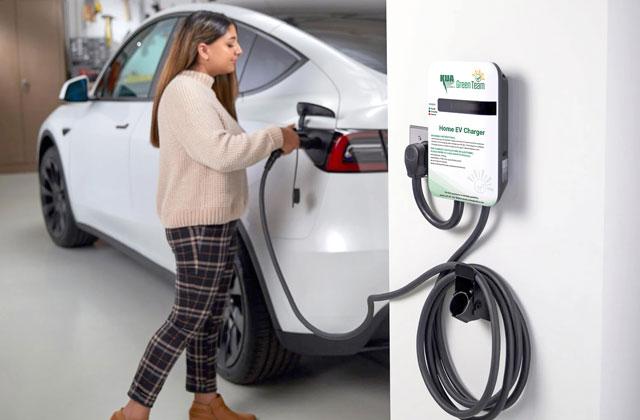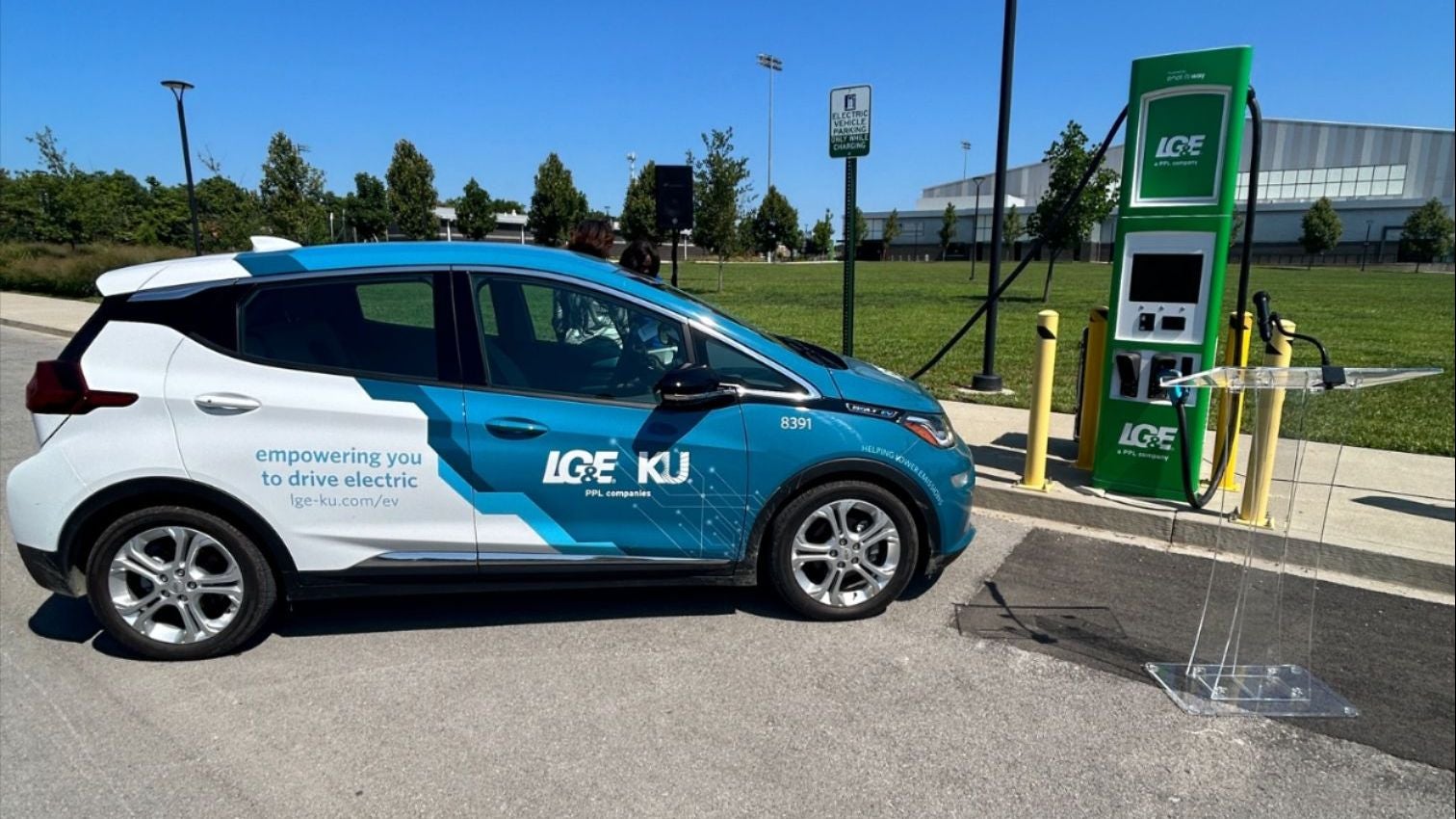Top EV Charging Information: Trick Updates on Infrastructure and Advancement

Recent Improvements in Fast-Charging Modern Technology

Moreover, improvements in battery technology, including boosted thermal management systems and greater power density batteries, complement fast-charging capacities. These developments alleviate the threat of battery degradation throughout quick charging, ensuring durability and efficiency for EV proprietors.
Additionally, the combination of clever billing services is improving customer experience, enabling real-time tracking and vibrant rates models. EV Charging news. This versatility enables vehicle drivers to maximize billing times and costs based on grid need
As car manufacturers proceed to invest in fast-charging networks, the collaboration between market stakeholders is vital. Partnerships in between billing terminal service providers and vehicle makers are leading the means for considerable coverage, ultimately fostering a more robust EV ecosystem. These developments are critical in supporting the transition to sustainable transportation.
Government Initiatives for Billing Development
Federal government campaigns play an essential duty in the growth of electrical car (EV) charging infrastructure, facilitating the transition to lasting transport. Different federal and state programs are being executed to enhance charging ease of access, lower the monetary concern on consumers, and promote the fostering of electric cars.
Notably, the united state federal government has allocated substantial financing with the Infrastructure Financial Investment and Jobs Act, which sets aside $7.5 billion for EV charging network development throughout the nation. This funding is intended at deploying thousands of brand-new charging terminals, especially in underserved areas, therefore attending to range anxiousness among potential EV purchasers.
Additionally, countless states are passing legislation to enhance the permitting procedure for charging terminal installations, which is crucial for speeding up deployment. Motivations such as tax credit scores and discounts for both consumers and organizations are likewise being presented to encourage the installment of charging facilities.
Furthermore, public-private collaborations are significantly ending up being an emphasis, leveraging private investment to enhance government funding. These campaigns underscore a collective strategy vital for constructing a efficient and extensive EV billing network, inevitably contributing to a greener and more lasting future.
Cutting-edge Battery Solutions Enhancing Efficiency
Transforming the landscape of electrical lorry (EV) technology, ingenious battery options are significantly enhancing effectiveness and efficiency. Breakthroughs in battery chemistry, particularly with lithium-sulfur and solid-state batteries, are leading to enhanced energy thickness, which permits longer arrays and faster billing times. These brand-new battery kinds have the potential to surpass conventional lithium-ion batteries by using greater capabilities while minimizing weight, therefore boosting total lorry performance.
In addition, developments in battery monitoring systems (BMS) are enhancing power use and extending battery lifespan. Intelligent formulas monitor battery health and efficiency, making it possible for real-time changes to billing and releasing processes. This not only enhances the efficiency of the battery yet additionally makes certain a much more sustainable and reputable energy source for EVs.
In addition, the assimilation of recycling technologies is addressing the ecological effect of battery production and disposal. Innovations in second-life applications for EV batteries are promoting their usage in energy storage space systems, adding to a circular economy.
As these cutting-edge battery options continue to evolve, they use this link assure to transform the EV market, making electrical automobiles much more attractive and available to a more comprehensive audience while sustaining worldwide sustainability goals.

Cooperation Between Automakers and Charging Networks
Recognizing the vital requirement for a robust billing facilities, car manufacturers are significantly teaming up with billing network providers to enhance the EV ownership experience (EV Charging news). These collaborations intend to develop a smooth billing environment that profits consumers and supports the transition to electric cars
Significant vehicle brand names are joining forces with established billing networks to increase their billing station coverage, ensuring drivers have accessibility to trustworthy and practical charging alternatives. For example, partnerships with networks like ChargePoint and Electrify America allow car manufacturers to incorporate charging solutions straight into their vehicles' navigating systems, assisting users to the nearest terminals and offering real-time availability updates.
Moreover, these collaborations frequently cause the advancement of fast-charging modern technologies that dramatically minimize the time needed to reenergize an EV. By pooling sources and know-how, automakers and billing networks can introduce quicker, developing services that fulfill the growing need for electrical movement.
Furthermore, joint initiatives might additionally result in even more standardized charging methods, which can reduce customer complication and promote wider EV fostering. Overall, these calculated partnerships are pivotal in developing a reliable and user-friendly billing infrastructure that satisfies the requirements of an increasing electric car market.
Difficulties Encountering EV Billing Infrastructure
As the electric automobile market remains to expand, several challenges are emerging that impede the growth of a thorough charging infrastructure. One of the primary challenges is the inadequate variety of billing terminals, particularly in underserved and rural urban areas. This space produces variety stress and anxiety among prospective EV customers, hindering them from making the button.
Additionally, the absence of standardization in billing technology makes complex the infrastructure landscape. Variants in plug types and charging rates can create confusion for customers and boost operational intricacies for billing network operators.
An check this additional pushing issue is the high price connected with the installation and upkeep of charging terminals, which can be a barrier for both exclusive services and public entities. Lastly, regulatory difficulties and zoning limitations can postpone the implementation of billing facilities, impeding development in expanding crucial services. Dealing with these obstacles will be vital for fostering a robust EV ecological community that supports the change to sustainable transportation.
Final Thought
In verdict, the recurring developments in EV charging innovation, sustained by substantial federal government look at here initiatives and innovative battery services, are vital for the development and performance of electrical vehicle infrastructure. Collaborations between automakers and charging suppliers better boost terminal insurance coverage, addressing the expanding need for obtainable billing alternatives. Regardless of obstacles that linger within the EV billing landscape, these growths symbolize a favorable trajectory towards a much more efficient and sustainable electrical automobile environment.
Advancements in charging facilities have led to the growth of ultra-fast battery chargers qualified of providing up to 350 kW of power, considerably reducing billing times. Variants in plug types and billing rates can produce confusion for customers and boost operational complexities for billing network operators.In conclusion, the recurring improvements in EV charging technology, sustained by considerable government campaigns and ingenious battery services, are crucial for the development and effectiveness of electric automobile infrastructure. Cooperations between automakers and billing service providers further improve terminal protection, dealing with the growing demand for obtainable charging alternatives. In spite of obstacles that continue within the EV billing landscape, these advancements indicate a positive trajectory in the direction of a more lasting and efficient electric lorry community.